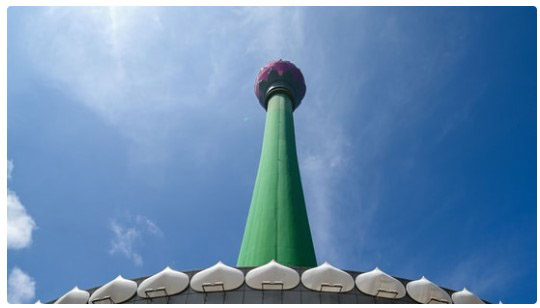Sri Lanka’s Lotus Tower: The controversial tower has become a potent symbol of the ousted Rajapaksa clan’s closeness to Beijing.
The 350-metre (1,155-feet) Lotus Tower, green and purple in colour, visible from all over Sri Lanka’s capital, Colombo, and built for an estimated $113 million, will open this week. The controversial tower has become a potent symbol of the ousted Rajapaksa clan’s closeness to Beijing. The tower is one of the several “white elephant” projects built with Chinese loans. Former Sri Lankan president Gotabaya Rajapaksa, who was ousted from office in July following months of protests over the island country’s severe economic crisis.
Why the controversy over the Lotus Tower
The tower’s construction has been plagued by corruption claims since Sri Lanka’s Mahinda Rajapaksa government began building the structure in 2012. Mahinda Rajapaksa borrowed heavily from China for infrastructure projects which failed including the Lotus tower which the state-owned Colombo Lotus Tower Management Company has decided to open in order to minimize losses. “We can’t keep this closed. The maintenance costs are huge,” chief executive Prasad Samarasinghe told AFP.
“We want to earn the upkeep of the building and turn this into an entertainment centre,” he added.
Local media criticized the structure as the communication tower cannot cover nor improve current transmissions in Sri Lanka. Calling it a “towering story of pride and waste,” and a vanity project of Rajapaksa, Sri Lankan media claimed that Rajapaksa wanted to make a copy of Beijing’s 405-metre Central Radio and TV tower but failed miserably.
Lotus Tower’s China connection
Sri Lanka’s current economic crisis which led to widespread protests in the country this year has been partly blamed on Chinese debt. Borrowings from Beijing account for over 10 per cent of Sri Lanka’s $51 billion in external borrowings that the country declared it would default on in April.
( Curtesy Hindustan Times)
